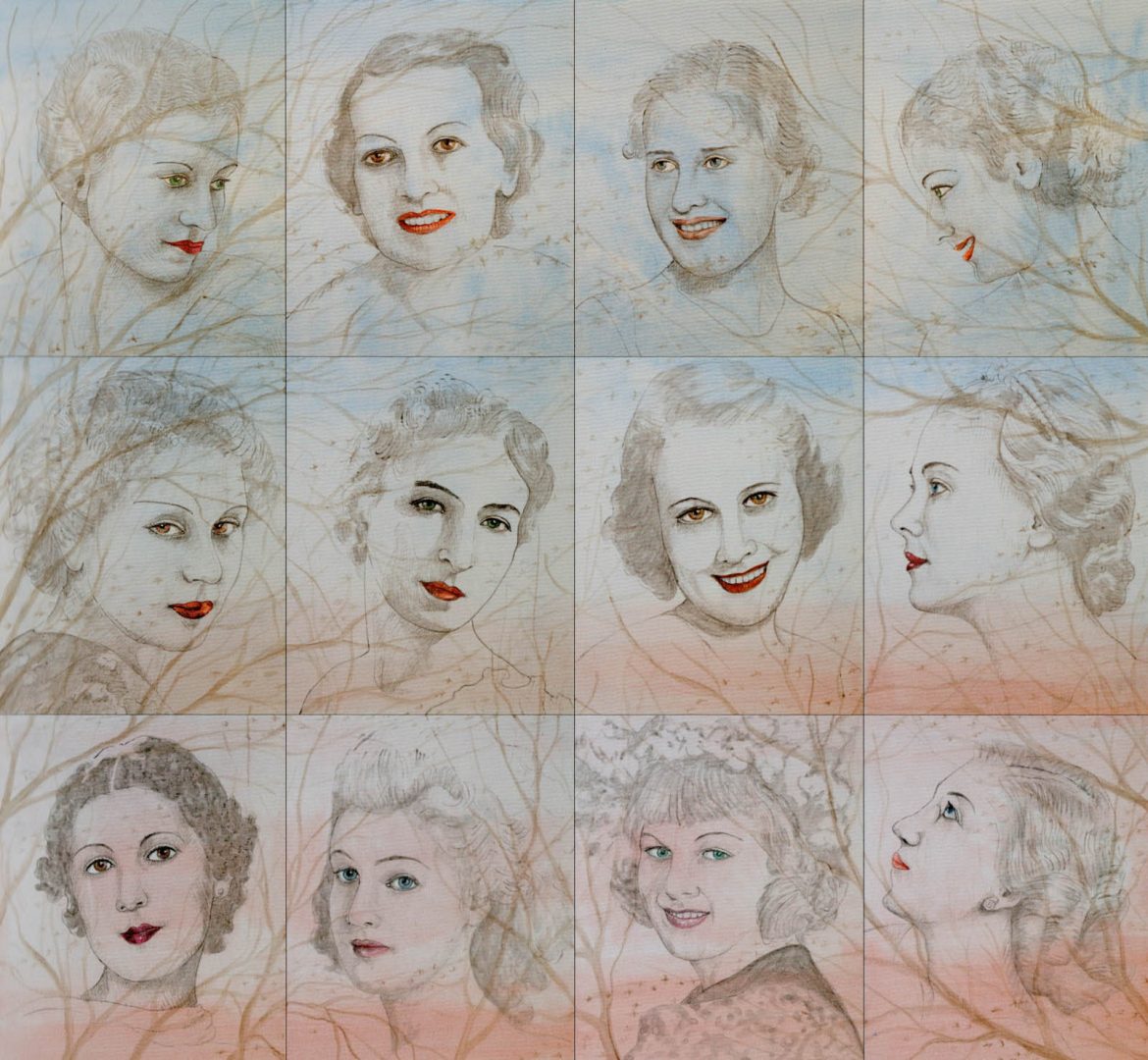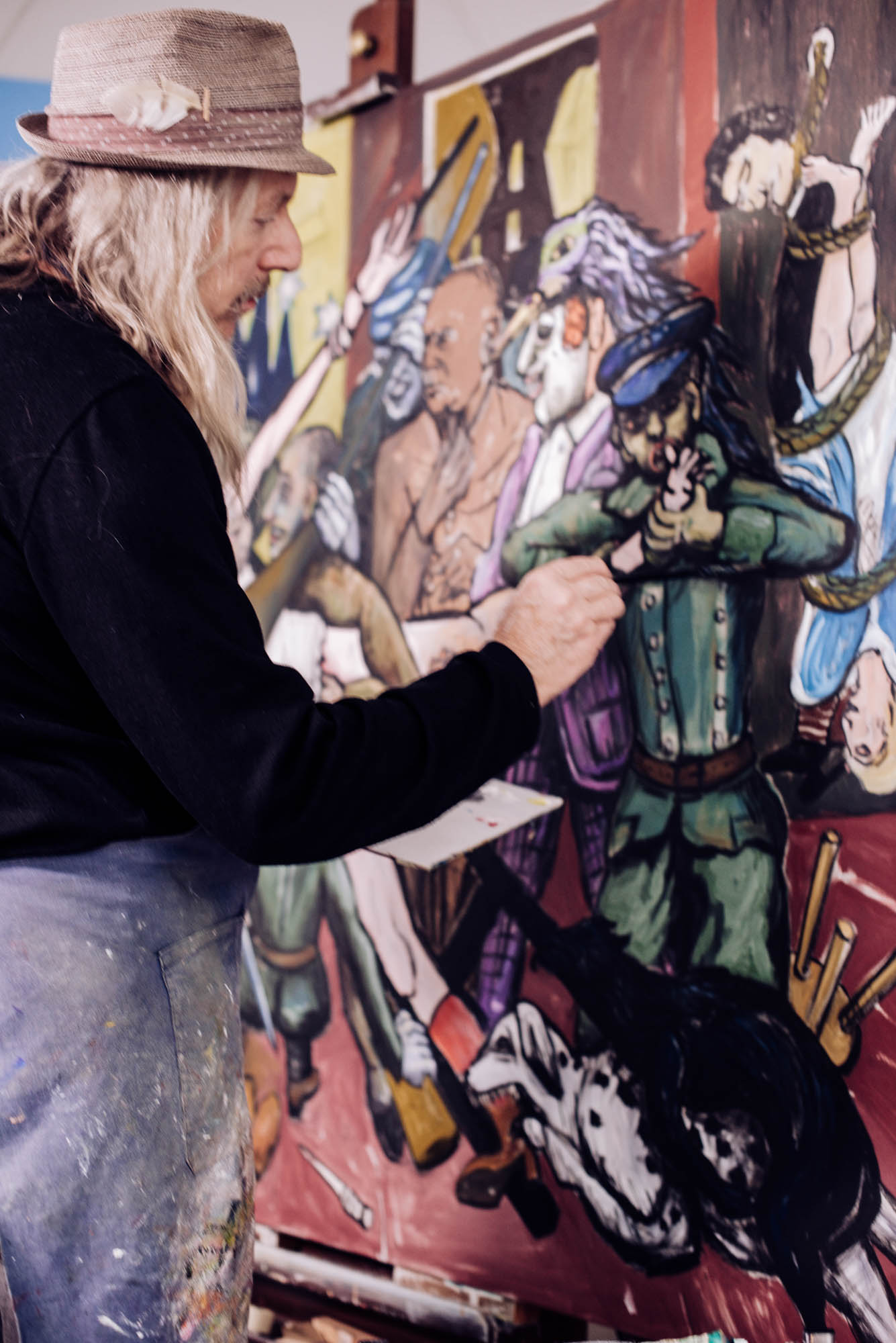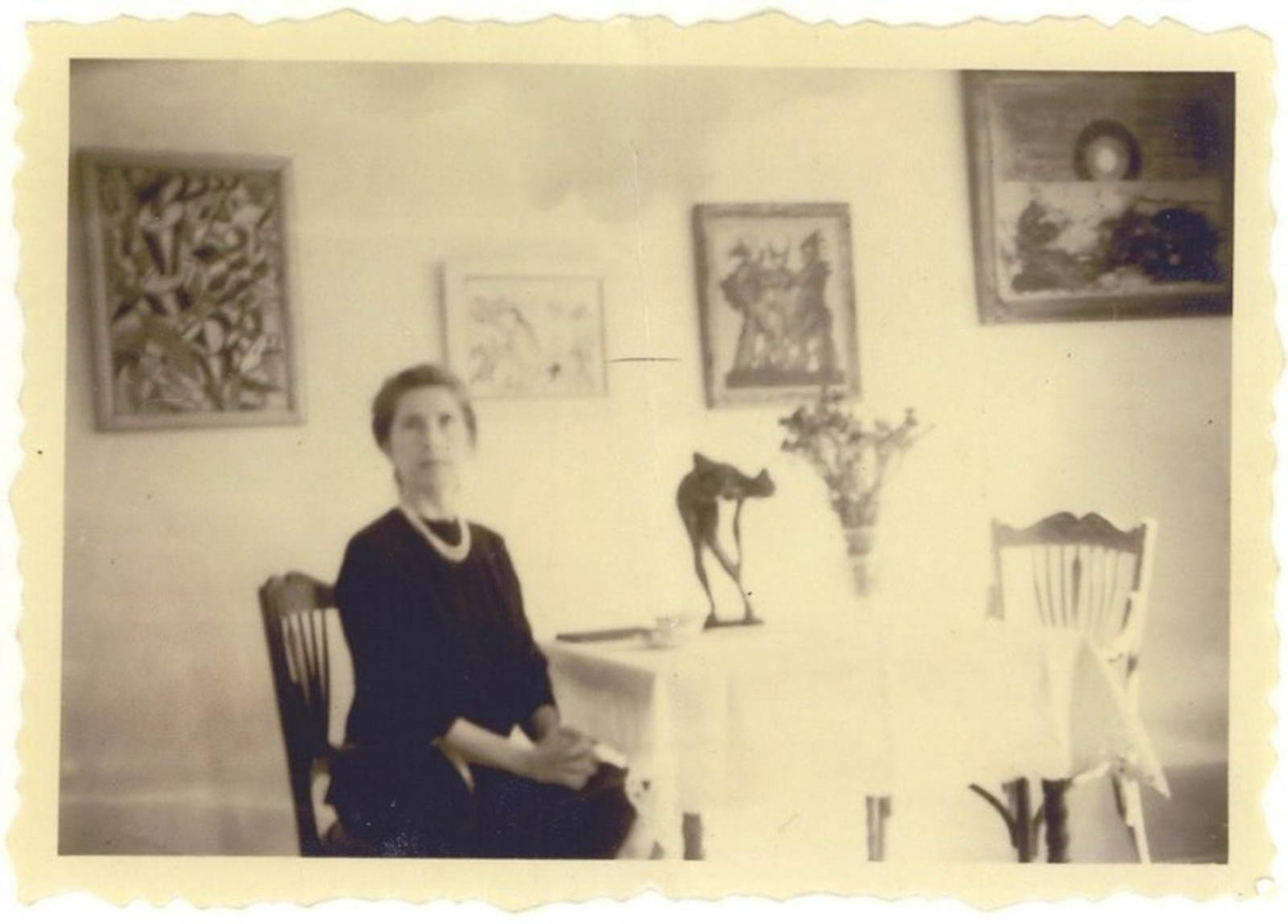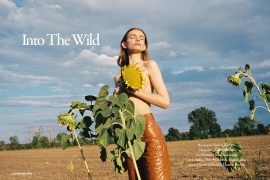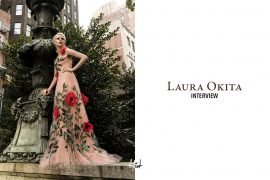Wolfgang Beltrachi is probably known as the finest art forger of the last decades, though the term “forger“ does paint the full picture of his captivating life. The German artist did not simply replicate existing paintings and sell them on the black market. He rather reinterpreted lost pieces of art – based on titles in catalogue raisonnés – of artists by reanimating their hand. Likewise, his buyers were anything but shady; his paintings found their way to the collections of some of the most highly esteemed collectors, museums and galleries. Beltracchi created approximately 300 artworks from about 100 different artists during the last 40 years, before he was sentenced to prison and forced to pay damages of thirty-five million euros in 2010. Today, his time in prison is over and Beltracchi paints again, however exclusively under his own name.
An Interview by Andy Sturm
Describe yourself in three words.
This is not possible. I am „too many“ to be described in three words.
How was it possible that you, together with your friend Otto Schulte Kellinghaus and your wife Helene, brought to market about 300 forgeries without raising any suspicion?
In the more than 40 years of my work, there have been different booms and recessions that had more or less influence on the art market. I think it was – and still is – the high quality of my works, that even convinced scientists, and the need for extraordinary artworks that guaranteed my “success” and didn’t raise any suspicion. Otto, whom I know since the 80s, attended to the distribution together with my wife. I got to know her in 1992 and I am in love with her for 25 years now. 24 years ago we married which made her member of my so-called criminal gang referring to prosecution.
How did you get the idea to earn your living by creating forgeries? Did your father raise this passion as he restored old paintings and copied famous artists as a hobby from time to time?
One thing is clear: You don’t wake up one day and decide: “I will become an art forger”. Of course, my environment had a certain kind of influence on me. I was born 1951 and my parents belonged to a generation that has been betrayed twice by the political elite. My father who wasn’t a party member had to fight on several frontlines during World War II and spent many years in war imprisonment. Adenauer’s [ed. West German chancellor 1949-1963] dissociation of the imprisoned soldiers, as well as the loss of our home and the longstanding evacuation of our family to Teutoburg Forest [wikipedia], caused my mother to ponder whether there is always more than one truth for the rest of her life. She became an inactive anarchist and I grew to be a “freak” who didn’t care about the established society in the Sixties. My means of expression were: nonconformist clothing, nonconformist behaviour, nonconformist art.
Is the only crime you ever committed to putting wrong signatures under your paintings?
No. My worst crime was to cast doubt. I don’t mean scruples about experts competencies but doubts that penetrate the whole art-system. I proved that those from gaudily distorted enlargement ad infinitum glorified objects named „artworks“ are not the result of the inner ghost of a god-kissed hyperhuman, but the result of the capability, knowledge and creative achievement of an artist.
Your paintings once were glorified by the art world. One work in the hand of André Derain, for example, was shown in an exhibition on „100 masterpieces of the Classic Modern“ at Fondation de l’Hermitage. Your painting „Red Picture with Horses“ in the hand of Heinrich Campendonk – that later became your downfall – was even described as „key work of modern arts“. Now, many waive them as mediocre or even bad. Can you take those people even seriously anymore?
Of course, I do. General reluctances or judgements are nonsense. Gallerists, experts, historians and critics usually spend years to gain their knowledge. The later vilification of my paintings simply shows their wounded vanity that came with the humanization of these pope-like art protagonists.
Does it bother you that only a few people decide about art and claim to be in possession of good taste?
I find it ridiculous when people claim to be intellectually superior. Art does not need such an elite demeanour, that is a masquerade for sales talks. The market has a valid function since through it artworks are sold but I would take it more seriously if it wouldn’t celebrate itself as much and offer a bigger stage to the artist instead so that they are able to make a living. Explanatory work and research on works of unknown artists is hard work though and gallerists that do this kind of work have my full respect.
Do you think you could have had the same success if you had painted the same artworks but used your own name instead?
If I had tried to seek recognition under my own name, no expert would have given me it. Only through my clandestine actions, it was possible for my art to get dignified by the art-world.
A lot of artists, almost all you ever imitated, had a certain style – something that can’t be said about you. What do you think about the importance of recognizability in arts?
I refuse to paint in a recognizable style as well as I refuse to turn my paintings upside down. I hate to develop stringent concepts and limit my artistic capabilities through that. I also refuse to adapt to a movement, let my artistic freedom be taken away from me and not being allowed to pick from the whole world of fine arts. Neither do I not worship a non-present myth nor do I see artists as gods. And I absolutely do not appreciate art-historians knowledge who alienate art with inadequate interpretation. I, therefore, do not follow the dogma of the indefinability of art but live my diversity.
Forger, master-forger, Robin Hood of the art-world or king of the art-fakers are only a couple of names that are oftentimes used to describe you. Which one do you like best and how do you look at yourself?
You forgot to mention the impostor in your enumeration. I am a little bit like Ibsen’s character Peer Gynt who has a wild life, experiences a lot – wealth, power, adoration – and in the end comes back to his home again and asks himself the famous question what „I“ is and says: „An onion. Many layers but no core.“
This character indeed shares some similarities with you. You too have experienced a lot, a film-like story and were put back to zero through your conviction.
The difference is that poor Gynt got lost in his myths. When he sees himself as onion without a core, he obviously never found the hotbed that lets the onion sprout shoots and develops into a beautiful flower. If we want to stick to that example I am like a whole field of daughter-bulbs in the hotbed of arts. Like a field of tulips that spread out from year to year.
How do you answer Gynt’s question of the „I“ for yourself?
Because I am „many“ I have the power to share and communicate. „I“ is the inner power that drives us and lets us grow. „I“ makes it possible to create and to give – up until the last breath. „I“ survives me and that’s where I am „self“.
Before you produced art in the hand of others, you had quite good chances to make it as an artist under your own name. 1978 three of your paintings were exhibited at Haus der Kunst in Munich and one of them even sold for 15.000$. Why did you decide against this career?
After the exhibition in Munich, I got many requests from gallerists but I declined all of them. The way of life of a „working“ artist that would have been linked to that, bored me. Additionally to that, I wasn’t interested in public success but just wanted to know whether I could succeed with my works. Through the requests, I got this affirmation.
This means you didn’t want to defer to the standards like producing art under a certain kind of pressure?
Why did I live against all these standards for years in the first place? To submit to that filth just for a bit of success and affirmation? I already knew the „successful ones“ back then, who put on a show at every opening and hoped for thunderous applause. If they once started to play a role, they had to play it forever and a day. Or they became professors for art, pegged to their chair for security reasons. Only they who reached the top, however, were allowed the freedom to produce nonsense – be it ever so bad – without being sanctioned by the big-boys of the art-world.
Was it this rebellious attitude that led to your decision to paint „forgeries“?
Yes. It was a question of moral for me to buck those temptations. My rejection was based on an anarchism that was aimed against the art-society and their rulebook. Illegality didn’t repel me. My aim was to destroy the audience’s illusion which dignified the protagonists of the art scene.
You once said that you easily could have produced 2000 paintings if you had wanted to. Knowing your story, one could describe you as a person who lives life to the fullest. Did you maybe never strive to become an artist but much more to be able to lead a life of dissipation through what you do?
I am an artist from birth and I never did anything else. I work as a painter, sculptor, photographer, filmmaker, writer and forger for 50 years now. I didn’t strive to create a recognizable brand though.
When you paint another artist: How do reach the level where you can really slip into an artists skin and paint exactly the same way – starting from the motifs up to the particular painting technique?
It starts by studying the oeuvre, personality and reception of the artist in whose hand I want to paint. Producing a new painting in one’s hand can only succeed because my own artistic experience leads me through these intensive studies. During this phase of continuous input a connection emerges – you can call it „unio mystica” and thereof a painting develops.
This reminds me strongly of „method acting“, a method that actors use to become one with the role they have to play.
It happens that this comparison is drawn. But it doesn’t fit completely as I do not play a painter but I am a painter. From my conscious as well as my subconscious experiences to the investigation of the oeuvre and the life of a painter, I try to find access to the emotional level I need to be able to paint in one’s artistic hand. For my way of painting the word „free method painting“ was created.
Which sources do you use to find access to an artist?
To prepare for a picture I study historical texts and the cultural and political surroundings, next to an analytical comparison of the art-historical considerations. Publications of people from the cultural surroundings are equally important sources as personal statements of painters.
Did the way you work change since you only work in your own name?
Today I have the freedom to exceed the borders of my past paintings. I can paint in multiple hands at once for example or I can let the work of one artist fade into the work of others. Sometimes the influence of a past painter is bigger, sometimes there is hardly any. If necessary I will only paint in my own hand. It’s an illusion though to believe that you can create something completely new in arts. Every artwork is based on works of earlier artists.
I ask this question a lot and in your case, it interests me extremely: What is art for you?
Art is a sponge. There is probably no modern term that is as hard to describe as that of art, yet we find so many definitions of it.
Do you think that art is necessarily linked to special skills that an artist pretty much has exclusively?
Traditionally there is a connection, yes, as we describe highly respected abilities as art like the art of cooking or the art of construction because they require certain knowledge. The same applies to sports and even politics when we talk about the art of fencing or the art of speaking. So somehow great skills are indeed linked to the term „art“.
What about art in the sense of painters or sculptors?
They are the ones who produce „artworks“. Them we call fine artists. They produce objects that are offered to collectors in the form of paintings or sculptures. But art can be found everywhere. The art market, for example, uses its art of seduction to sell things to collectors which become artists themselves by collecting and arranging art objects. They know the art of collecting. Dramatic arts is produced by film-artists in the form of art-movies and dramatic arts and the art of dancing lead over to music-artists. Not to forget the artists of writing whose products are called literature.
Has the term „art“ changed during the last years?
During the transition into the media age new shapes of art-workers have appeared. Media-artists, installation-artists, light-artists, performance-artists or concept-artists always gather new stimulations to filter new artworks out of them. Thus art blows up as critics, historians, theoretics and scientists do meta art’s groundwork. In today’s system it is possible to absorb anything and discard it as a filtered secretion in art-form.
So it’s not possible anymore to tell what is art and what is not?
Art has become blurry, more and more spongy and watered-down until it seeps. Sometimes stifling in shimmering artificiality, sometimes almost hollow, close to death, it always finds its space anew and expands into the niches of the art palaces or into the middle of our lives. The word „art“ is an illusion, a forgery.
The art-world is in the eyes of many people an elite circle of people who almost randomly choose about art. Do you share their opinion of caprice?
I think that in parts of the art-society something took hold that is absolutely out of place. I call it educational pride. Art should stay human though and I consider it presumptuous to exclude whole classes of people just because some consider themselves intellectually superior.
How do you feel about arts in the sense of Marcel Duchamp that does not only look at the artwork alone but also considers the whole process of creation?
I find it quite positive. The original readymade-thought was a genius. The question if all following replicas that Duchamp brought to market represent this genius act, or if they were only commodities is another initiation for a discussion of the term „art“ however.
Is it possible that this definition can become treacherous? As you said, one can produce commodities in which the viewer will surely find some meaning during his interpretation.
That is why there is probably nothing more exciting than to discuss different concepts of art as this indeed is a possible scenario. In my youth, for example, I was fascinated by Piero Manzoni who put his „Merda d’artista“ in tin cans and sold them at approximately 37USD – the price of gold at that time. Many years after his death you had to pay almost 3000 times as much for it. And this is how even those „dangerous“ sides are quite fascinating.
Did you ever have tendencies yourself to try yourself in this kind of arts?
My wife and I created photographs of a fictional art collection years ago. The creative achievement was the enactment of the situation as well as the technical realization of the concept. Critics however degraded them as pure means of fraud up until a „real artist“ reconstructed my photos and showed them in an exhibition – his „fake“ photos were considered art. At the same time though, an institution in Switzerland asked for my original photos as exhibits for a photo-art exhibition.
Let’s talk about where the „truth“ in artworks can be found: is it more in the intention of the painter or in the interpretation of the viewer?
On the first page of his book „Voyage au bout de la nuit“ the French author Louis-Ferdinand Céline [wikipedia] shares an interesting thought: „If you have no fantasy it is a small thing to die, but if you have, to die is far too much.“ Transferred to arts this thought means to me: The only truth in an artwork lays in the connection between the object and the viewer. Only in the feeling that unfolds when you look at it lays the truth.
How hard was it for you to establish yourself as an artist again after your conviction? You have in parts been condemned but also knew how to use the media’s interest to your advantage.
In the time after my conviction, the revenge of the resentful tasted quite bitter but also was my motivation to go my own way independently. The fact that the media is watching me in doing so has its pros and cons. Meanwhile, the public isn’t only interested in my role as former forger though but also in my current arts.
It surely feels good to be not only reduced to your past. What do you currently work on?
We work on a big project right now. My friend and collector Christian Zott has a wonderful vision. We together with Mauro Fiorese, an Italian photographer, create a project called „Kairos, the right moment“. It is a contemporary project that allows visitors a ramble through 2000 years of occidental art-history. It aims at showing that history has its fractions and gaps that we do not even perceive. We will start our exhibition in October 2018 at Biblioteca Nazionale Marciana in Venice and will go on to exhibit in other European cities.
That means that many of our perceptions about the art of a certain time are not accurate or at least have to be adjusted?
This means there have been a lot of significant moments that „arts“ did not perceive, yes. Only a small part of the created arts is visible – the part who was in favor of fate. The old Greeks called this „Kairos“.
And now you try to bring up the unseen artworks?
The photos of Mauro Fiorese show the unseen artworks whom „Kairos“ passed. They prove that most of our cultural heritage remains unseen. Even a lot of museum can only show a fraction of their collection. I for my share paint pictures that refer to happenings that have not been illustrated on paintings yet. As each time period has its artistic expression I try to create a direct access to the painted event by using the handwriting of the most influential artists of the time.
So you slip into their skin to convey a more authentic message through your paintings?
Yes. I give you an example: When Darwin jumped onboard the HMS Beagle as a young university graduate in 1831, he didn’t know himself which findings he was going to make. Today we know that the results of his journey shaped our anthropology more than any other event in the past 200 years. It is obvious to portray this happening in the style of William Turner [wikipedia] who was a contemporary and an extraordinary revolutionary painter.
Have you ever gotten any requests from filmmakers who wanted to tell your story? It probably has everything that a good film needs.
Even before our first autobiography „Self-portrait“, my wife and I got requests that aimed at the negotiation for the film rights. We always agreed though that there will only be a movie if it tries to tell what we have to tell. Christoph Waltz recommended an agency to us, however, after several negotiations with international producers, we decided to wait some time with the cinematic narration of our story as it is not over yet – if anything it really just gets exciting. But we currently work on a stage version of our second book which is a collection of 8000 pages of handwritten letters which Helene and I wrote each other from cell block to cell block during 14 months of custody.
Finally: One wish or message that you would like the world to hear?
Life is the biggest artwork we can produce. He who sees it as a game hasn’t understood its uniqueness.

